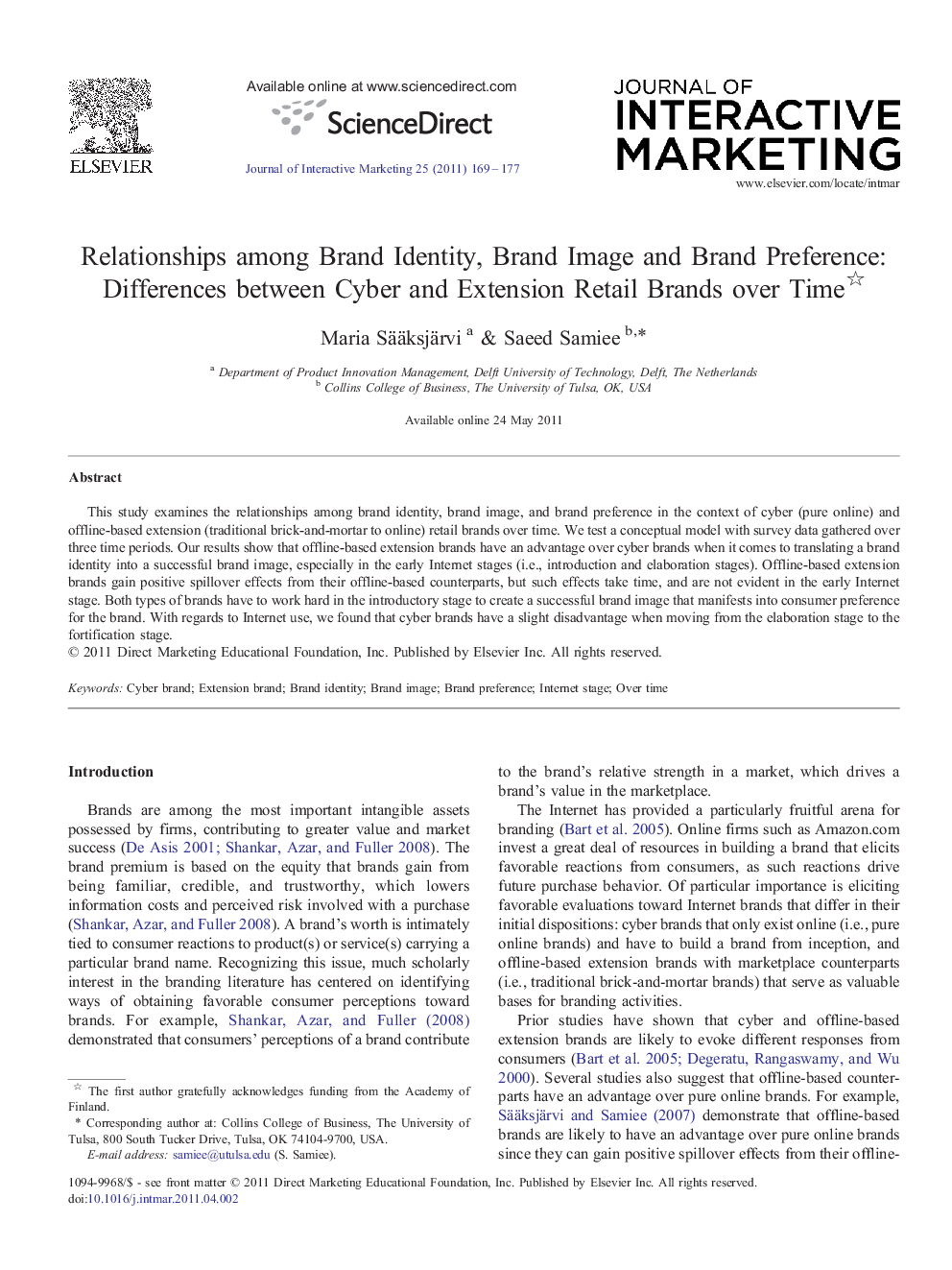| Article ID | Journal | Published Year | Pages | File Type |
|---|---|---|---|---|
| 886116 | Journal of Interactive Marketing | 2011 | 9 Pages |
This study examines the relationships among brand identity, brand image, and brand preference in the context of cyber (pure online) and offline-based extension (traditional brick-and-mortar to online) retail brands over time. We test a conceptual model with survey data gathered over three time periods. Our results show that offline-based extension brands have an advantage over cyber brands when it comes to translating a brand identity into a successful brand image, especially in the early Internet stages (i.e., introduction and elaboration stages). Offline-based extension brands gain positive spillover effects from their offline-based counterparts, but such effects take time, and are not evident in the early Internet stage. Both types of brands have to work hard in the introductory stage to create a successful brand image that manifests into consumer preference for the brand. With regards to Internet use, we found that cyber brands have a slight disadvantage when moving from the elaboration stage to the fortification stage.
